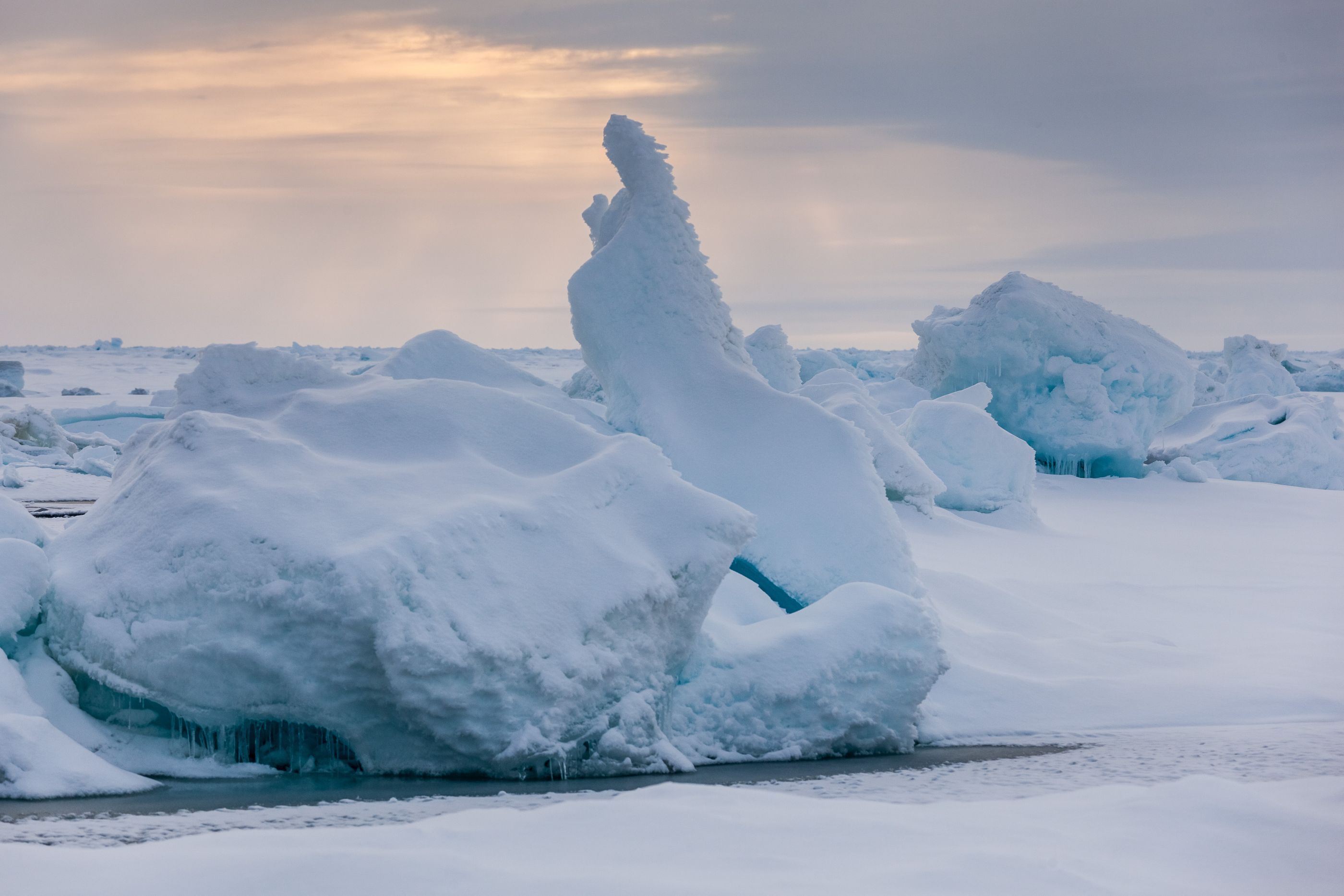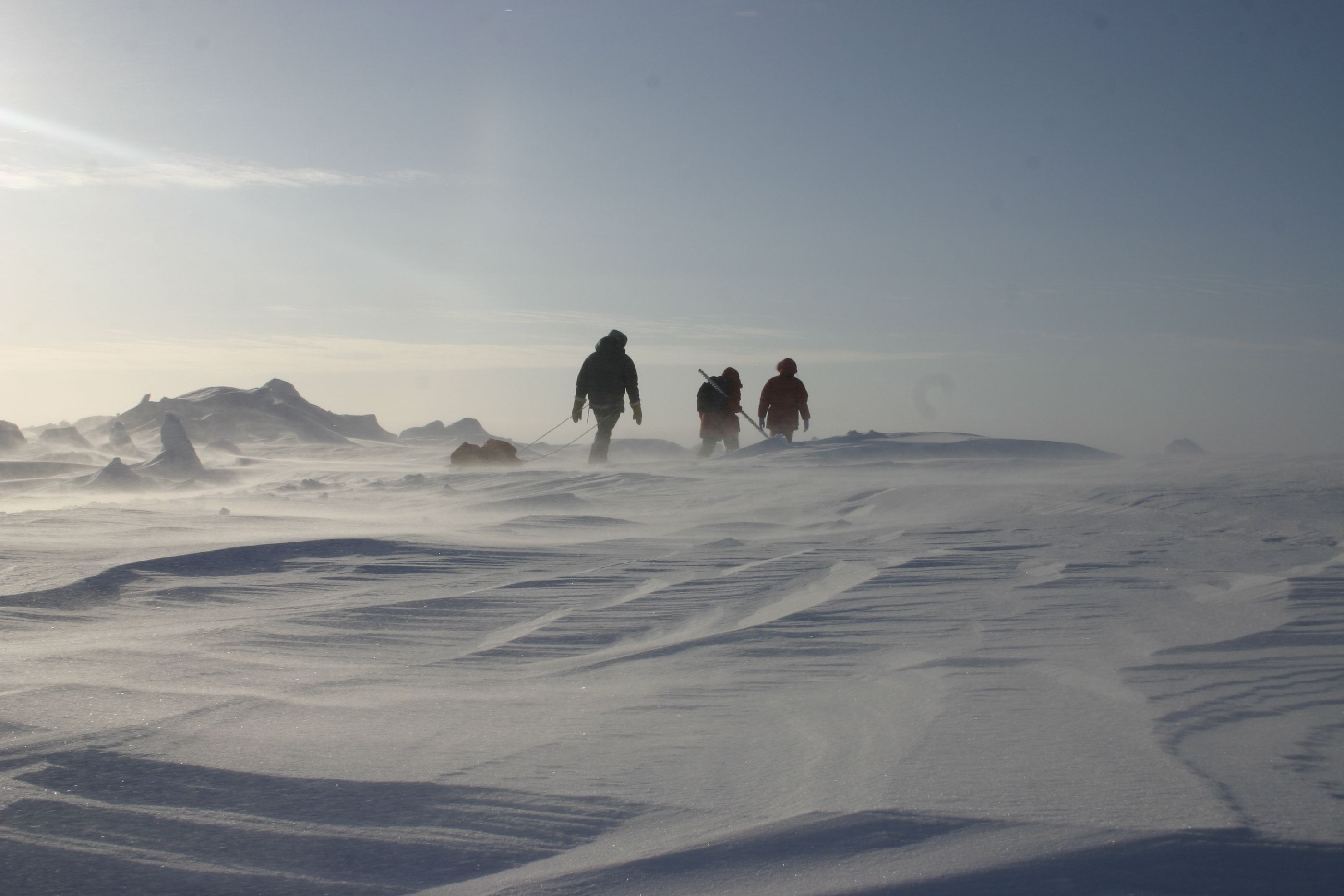
Climate change is transforming the Arctic sea ice: today’s ice is thinner, younger and more prone to drifting than the traditional multi-seasonal, several-metre-thick pack ice. But the ice is more than just a clearly visible barrier between the ocean and atmosphere; it also has a major influence on various processes that take place in both of them.
Further, sea ice interacts with the Arctic ecosystem and with substances produced by Arctic organisms, which in turn drive biogeochemical processes in the Arctic system. In light of these complex interconnections, a pressing question arises: given the changes in the ice, how is the climate in the Arctic evolving – and how will this affect the climate in other parts of the Earth?
Accordingly, sea ice, as a central element of the Arctic climate and ecosystem, is one of the major research foci of the MOSAiC expedition. For the first time, researchers had the opportunity to continually monitor changes in the ice throughout every season. In this regard, the sea-ice experts explored various aspects of the sea ice and its snow cover. The big questions concern the exchange of energy, stimuli and chemical compounds between the atmosphere, snow, sea ice, and ocean. For example, they investigated the dynamics of today’s thinner and more mobile ice.
When do pack ice hummocks form, or channels in the ice? How do ocean currents and winds in the atmosphere drive ice drift?
How are local and regional energy exchanges affected when the thickness and characteristics of snow and sea ice change? How do changes in the respective seasons affect the overall annual balance? And what do these processes and changes look like to satellites, and in model studies?
What steps need to be taken to arrive at a better understanding of sea ice, and ultimately, at better forecasts? These studies directly integrate the findings of oceanographers, and in turn offer a basis for the research conducted by the atmosphere team.
 Central topics for the snow and ice experiments during the MOSAiC expedition were e.g. the mass balance and how it changes throughout the year.
Central topics for the snow and ice experiments during the MOSAiC expedition were e.g. the mass balance and how it changes throughout the year.
 The sea-ice research conducted during MOSAiC also investigated the energy flows (sunlight and warmth) between the atmosphere and ocean, which are shaped by the sea ice. In this regard, sea-ice specialists e.g. measured how intensively the ice reflects sunlight (albedo), how much energy it absorbs, and how much sunlight passes through it into the ocean (transmission). With these measurements, MOSAiC researchers addressed the question of how the ice serves as an insulating layer. They also looked into e.g. how seasonal, regional and general differences in the ice affect this energy exchange.
The sea-ice research conducted during MOSAiC also investigated the energy flows (sunlight and warmth) between the atmosphere and ocean, which are shaped by the sea ice. In this regard, sea-ice specialists e.g. measured how intensively the ice reflects sunlight (albedo), how much energy it absorbs, and how much sunlight passes through it into the ocean (transmission). With these measurements, MOSAiC researchers addressed the question of how the ice serves as an insulating layer. They also looked into e.g. how seasonal, regional and general differences in the ice affect this energy exchange.
 The snow that covers the sea ice for the majority of the year enjoys a unique and in many cases decisive role. Why? Because in many senses, the snow’s characteristics are more extreme than those of the sea ice: it serves as an additional and more effective barrier for thermal flows, shapes a number of exchange processes, and greatly influences how much sunlight the sea ice reflects. To explore these aspects, the MOSAiC sea-ice experts engaged in an extensive and detailed battery of snow measurements and sampling.
The snow that covers the sea ice for the majority of the year enjoys a unique and in many cases decisive role. Why? Because in many senses, the snow’s characteristics are more extreme than those of the sea ice: it serves as an additional and more effective barrier for thermal flows, shapes a number of exchange processes, and greatly influences how much sunlight the sea ice reflects. To explore these aspects, the MOSAiC sea-ice experts engaged in an extensive and detailed battery of snow measurements and sampling.
 When the snow melts in the spring, large melt ponds begin forming on the surface of the sea ice. Though it’s clear that these pools have grown in number and size over the past several years, many of the processes involved remain under-researched – which is why they, too, received considerable attention throughout the year.
When the snow melts in the spring, large melt ponds begin forming on the surface of the sea ice. Though it’s clear that these pools have grown in number and size over the past several years, many of the processes involved remain under-researched – which is why they, too, received considerable attention throughout the year.
When viewed from altitude, the melt ponds appear dark, which also means they absorb considerably more solar energy than the bright ice and snow. Before the MOSAiC expedition it remained unclear how the energy balance and ecosystem of the sea ice and upper water layers are currently changing.
 It’s common knowledge that the sea ice is also an important habitat. This is especially true for the underside of the ice, but also for the brine channels within it, and increasingly for the upper boundary layer between it and the snow. How have the latest changes in the sea ice affected the living conditions there?
It’s common knowledge that the sea ice is also an important habitat. This is especially true for the underside of the ice, but also for the brine channels within it, and increasingly for the upper boundary layer between it and the snow. How have the latest changes in the sea ice affected the living conditions there?
Many marine organisms metabolically process chemical compounds that are exchanged between the ocean and atmosphere. For example, algae absorb carbon dioxide that comes from the air and is dissolved in seawater. The ice plays an important part in this exchange – firstly, because it serves as a barrier, and secondly, because it is home to those organisms whose metabolisms help shape the chemical processes involved. During the MOSAiC expedition, this research was pursued in close collaboration with colleagues from the biogeochemistry and ecosystem teams.
Exclusive data and information from the MOSAiC sea ice physics research are available at meereisportal.de.
The side provides information on the sea ice situation and the MOSAiC station’s drift, as well as the first measurements from buoys and other equipment in the form of maps and other material.
In the special MOSAiC map section of meereisportal.de, are downloadable daily maps as well as current data and additional information on sea-ice related aspects of the expedition available.
The following products are ready for use: